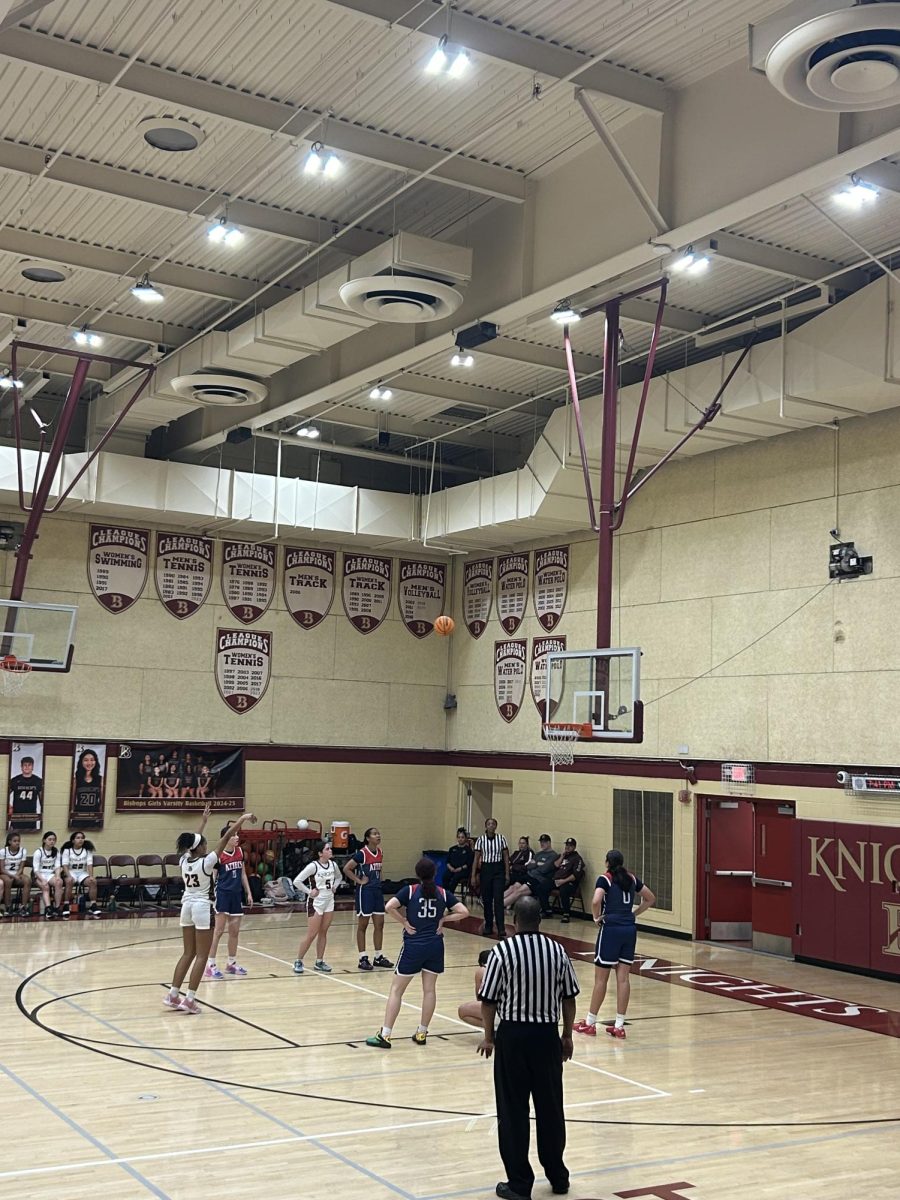Kevin de Bruyne, Kyle Walker, Cristian Romero, Federico Chiesa, and Bukayo Saka, are all top-level soccer players — and are all injured.
These are just a few out of the 90 currently injured players in the English Premier League (EPL) alone. According to the 2023-2024 Howden Football Injury Index (HFII), during the 2023-2024 season there were 4,123 recorded injuries in the top five leagues, compared to the previous season’s 3,967. This reflects a steady trend showcased in the last few years of a 3-7% increase in injuries, excluding the 2021-2022 season when the World Cup took place. However, this increase in injury affects certain players, teams, and leagues disproportionately.
German teams were hit especially hard by the recent rise in injuries. The 2023-2024 HFII reported that the top German league, Bundesliga, has suffered an injury count increase of about 66% since the 2020-2021 season. The Bundesliga also had the highest injury count out of all top 5 leagues last season, with a staggering 1,255 injuries, as disclosed by the 2023-24 HFII, dwarfing the second place EPL with 915 injuries.
Players have been outspoken about the injury situation. In an interview for Tiempo de Juego, a Spanish sports media source, Real Madrid player Dani Carvajal was asked about the number of games that players face nowadays. Top players often have to compete in domestic leagues, European leagues, international club tournaments, domestic tournaments, and national teams. He said, “Going on a strike for us as players is a possibility…The players are not taken into account [when increasing the games], we have to raise our voice.”
Rodrigo Hernández Cascante — or Rodri —is the defensive midfielder and lynchpin for Manchester City. Last season, he won the Premier League, and Champions League with the club. He stated in an interview for ESPN, “If this [number of games] carries on we will have no option but to go on strike: we’re worried it’s too much.” Ironically, Rodri tore a knee ligament just days after the interview, and was ruled out for the rest of the season.
Adam Jaimovich (‘28), a fan of Manchester City, said that Rodri “is a big leader, and his injury can affect the whole structure of the team. While he’s sidelined, you start looking for replacements, for other players to step up and fill his role, and I think that kind of shift in mentality can both affect the internal club workings and the team morale.”
Despite growing injury concerns, organizations such as the Fédération Internationale de Football Association (FIFA) and the Union of European Football Associations (UEFA) continue to raise the number of games played in a bid to make more money. In the last four years, UEFA added a new tier to their European tournaments called the Conference League. They’ve expanded their nations league format to include more teams and games, and increased the number of games in the prestigious Champions League from a maximum of 10 to 16. FIFA also established a new tournament that further strains players, the Club World Cup.
Profits-wise, increasing the amount of tournaments seems to have proven both effective and timely. According to ESPN, European soccer generates 38% more revenue than they did five years ago. This roughly correlates to when these major organizations started to implement new tournaments and more games. This rise in revenue is often cited by groups as a justification for the increase in games; but, fans view it differently.
Alex Yang (‘27), a Bishop’s soccer player and avid fan of Tottenham Hotspur, stated that “it’s not just about the money, it’s about the desire to play, it’s about the love for the game. And I think that if you have too many games, if you have too many injuries, it can take away that desire to play. Players will begin to play cautiously.” His thoughts are backed up by many fan sentiments surrounding the national teams.
In the modern soccer climate, international competitions have become an injury landmine for both clubs and players. During this time, players leave their league team, and compete in competitions representing their nations, a system akin to the Olympics. Unless a major tournament — such as The European Championship (Euros), Copa America, or the World Cup — is happening, international matches are less about the result and more about praying players return uninjured.
Unfortunately for many fans and coaches, these prayers often go unanswered. “During the regular season players are playing around 50 games, but with international breaks; it could be upwards of 60 or 70 games,” said Bishop’s soccer player David Lai (‘25) “It’s just not good for players both physically and mentally to play multiple games a week over and over again.”
Typically, when a player goes to the national team, they only have two weeks or so to acclimate, an inadequate amount of time to learn the team’s intricacies. Without a sense of their teammate’s flow, the athletes adopt a more start-stop style of play, which places a greater strain on the players’ bodies. This, combined with the lack of rest from travel and poor nutrition, leads to various injuries. The Spanish media and fans refer to this injury phenomenon as the “FIFA virus.”
In correlation to the FIFA virus, rejection of the national team has increased, something the Spanish media refers to as the “hidden strike.” When a national team is being formed, the manager handpicks his players. When chosen, players almost never reject the honor of representing their country, but in recent years, the number of pullouts has increased almost suspiciously. Some media sources have even begun to express skepticism about the injury that prevented Real Madrid superstar Kylian Mbappé from joining France’s last international bout, claiming that he and Madrid exaggerated the injury to prevent unnecessary playing time.
Fans also support player’s decisions to avoid international duty. At the end of 2021, Pedro González Lopez (Pedri), who was 18 at the time, suffered a hamstring injury hampering his Barcelona career. Pedri had represented Spain in both the Euros and the Olympics that year, resulting in many Spanish fans blaming these competitions for the setback. This summer, the same thing happened to Fermín López, another Spanish wonderkid.
These two young Spanish talents both being injured reflects a greater trend of youth injuries across the board. The 2023-2024 HFII found that the severity of injury in U21 players has gone up by 187% since the 2020/2021 season.
When young players are engaging in enough games to overwork them, it’s almost always because they are starting and bringing something unique to the team. Kobbie Mainoo, Fermín López, Pedri, Giovanni Reyna, and Xavi Simons are among the most prolific young players that were injured, or are currently injured. All of them share the traits of starting, and being a central figure in their respective teams.
Although the Bishop’s Boys Varsity Soccer team managed to avoid an abundance of injuries last year, a cornerstone of the team, alumni Jordan Luo (‘24) was hurt early into the season. He was a versatile center attacking midfielder, and an experienced player who had contributed to Bishop’s promotion in the previous season. Jacob Cravatt (‘25), another Varsity centerback, stated, “Jordan liked making things difficult for the defense. He was a dynamic player, and it was tough not having him, even if he wasn’t the main goal scorer.”
Despite losing a crucial figure in the attack, Jacob expressed that “we [the team] did without him, we kind of had to.” He summed up the problem that teams are faced with when athletes are sidelined, “When key players on a team get injured, it’s nearly impossible to find someone who can do their job instead.”









![“I [look forward to] the adrenaline of just competing with your friends and playing a sport that I’ve loved for so many years,” Sydney Mafong (‘26) said. “It’s just unmatched.” The Softball team celebrates a victorious moment in the game against San Diego High School on March 15th during the Torrey Invitational, which Coach Joe “Joey” Moreno called the “first real test of the season” in a Locker Room email and won 10-3.](https://thebishopstower.com/wp-content/uploads/2025/04/Screenshot-2025-03-17-at-21.49.22-1200x1016.png)